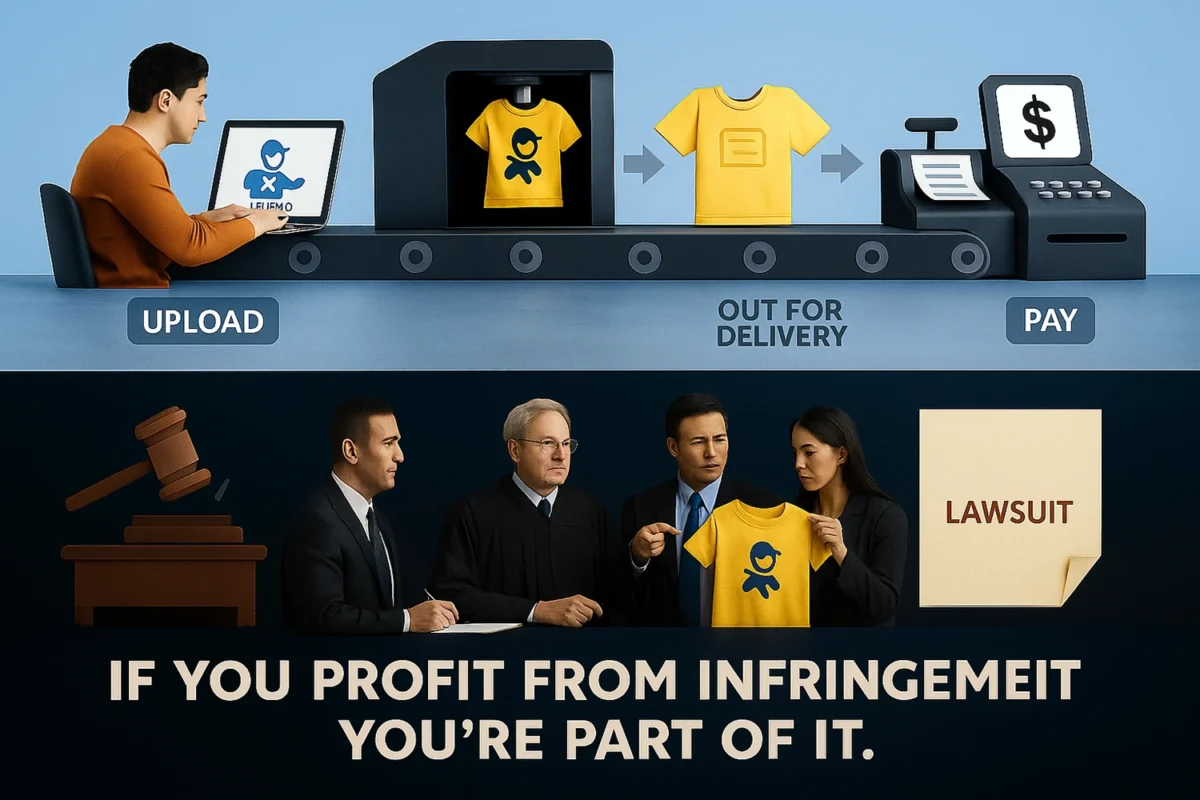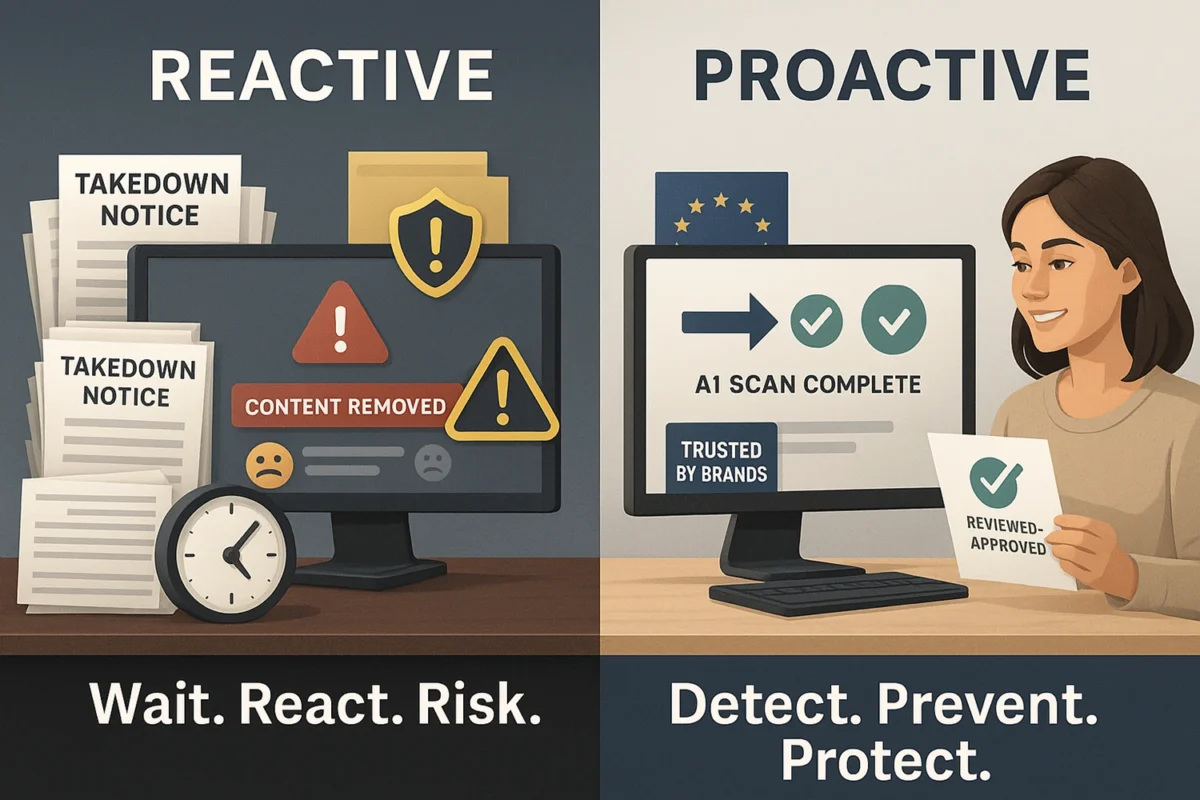Parody vs. Infringement: Where Is the Line?
Parody occupies a unique and complicated space in intellectual property law – especially when it shows up on platforms selling user-generated designs or custom merchandise.
Creators often claim “it’s a parody!” to excuse designs that, legally, may still be infringement.
For platforms, distinguishing between protected parody and unauthorized use is critical to managing IP risk.
Here’s how to understand the line, what courts consider, and how smart moderation workflows can protect your platform.
1. Parody vs. Satire: A Crucial Legal Difference
- Parody uses copyrighted or trademarked material to comment on, criticize, or mock that specific work.
Example: A t-shirt showing a distorted, humorous version of a famous character to comment on that brand.
- Satire uses copyrighted material to comment on something else entirely (society, politics, etc.), not the original work.
Example: Using Disney characters to criticize government policy – without targeting Disney itself.
Why it matters:
- Parody is more likely to qualify for fair use protections.
- Satire typically does not qualify and requires a license from the rights holder.
Key takeaway:
If it comments on the original work itself = parody (possible fair use).
If it just uses the work as a tool = satire (higher risk of infringement).
2. Risk in Case of Commercial Use
Even true parody is less likely to be protected when used commercially – especially when it:
- It is sold on physical products (t-shirts, mugs, posters, etc.)
- Directly competes with the brand’s own merchandise
- Could confuse consumers into thinking it’s endorsed
Courts heavily weigh whether the use is for profit when assessing fair use defenses.
Important:
Selling parody designs online shifts the balance against fair use, even if the commentary is clever.
For platforms:
- Simply hosting parody content that users monetize increases your risk, especially if the platform profits too (commissions, listing fees, fulfillment).
3. How Courts Analyze Parody vs. Infringement
When deciding whether parody is protected, courts typically ask:
- Is the new work transformative?
Does it add new meaning, context, or commentary – or merely copy?
- Does it target the original work?
Is it poking fun at or criticizing the original – not just using it decoratively?
- How much was taken?
Parody often requires recognizable elements, but less is better. Excessive copying weakens the defense.
- Is there potential market harm?
Does the parody replace the original or confuse buyers into thinking it’s official? Courts give parody more leeway – but only when it’s clearly transformative, targets the original, and doesn’t unfairly exploit the market.
4. How Platforms Should Moderate Parody Products
Given the fine legal line, platforms must treat parody content carefully but proactively:
Moderation Best Practices:
- Require users to disclose parody intent when uploading borderline designs.
- Use context-aware AI tools (like Infringio) to flag designs that visually reference major IP assets.
- Prioritize manual review for flagged content involving famous brands or characters.
- Train moderation teams to recognize true parody vs. decorative or satirical use.
- Document decisions to show good-faith evaluation if challenged by rights holders.
Platforms should allow parody only when confident it meets legal standards – and remove or reject designs that are satire disguised as parody.
Proactive moderation shows that your platform isn’t ignoring risks – and strengthens your Safe Harbor or passive role defense if litigation arises.
Conclusion: Parody Is a Shield – But Only When Used Correctly
Parody is a legitimate form of creative expression, but not all humor or satire qualifies.
For platforms, the stakes are high:
- Hosting infringing “parody” content can destroy Safe Harbor defenses.
- Commercializing risky designs magnifies exposure to lawsuits.
- Proactive, context-driven moderation is essential.
With tools like VISUA’s Infringio, platforms can spot parody risk early, prioritize human review intelligently, and stay on the right side of both law and public trust.
Want to detect parody vs. infringement before it damages your platform?
Book a demo with VISUA today about proactive IP enforcement with Infringio.
Disclaimer: Not Legal Advice
This content is provided for informational purposes only and does not constitute legal or professional advice. The information reflects our understanding as of the date of publication and may not apply to every situation or jurisdiction. You should consult qualified legal counsel for advice tailored to your specific circumstances. Any actions taken based on this content are at your own risk. Neither VISUA nor its affiliates accept liability for any losses or damages arising from the use of this information.
RELATED
Redbubble, Teespring, and the Lessons of IP Enforcement Failures
Reading Time: 3 minutesPrint-on-demand (POD) platforms empower creators to design and sell products without holding inventory. But with that power…
BlogHow AI Is Changing the Game in IP Enforcement
Reading Time: 2 minutesIP enforcement used to be simple: But today’s infringement landscape – especially for POD and UGC-heavy platforms…
BlogThe Future of IP Compliance – Proactive vs. Reactive Models
Reading Time: 2 minutesFor years, most platforms treated IP compliance as a reactive function: But the market – and the…
Blog


